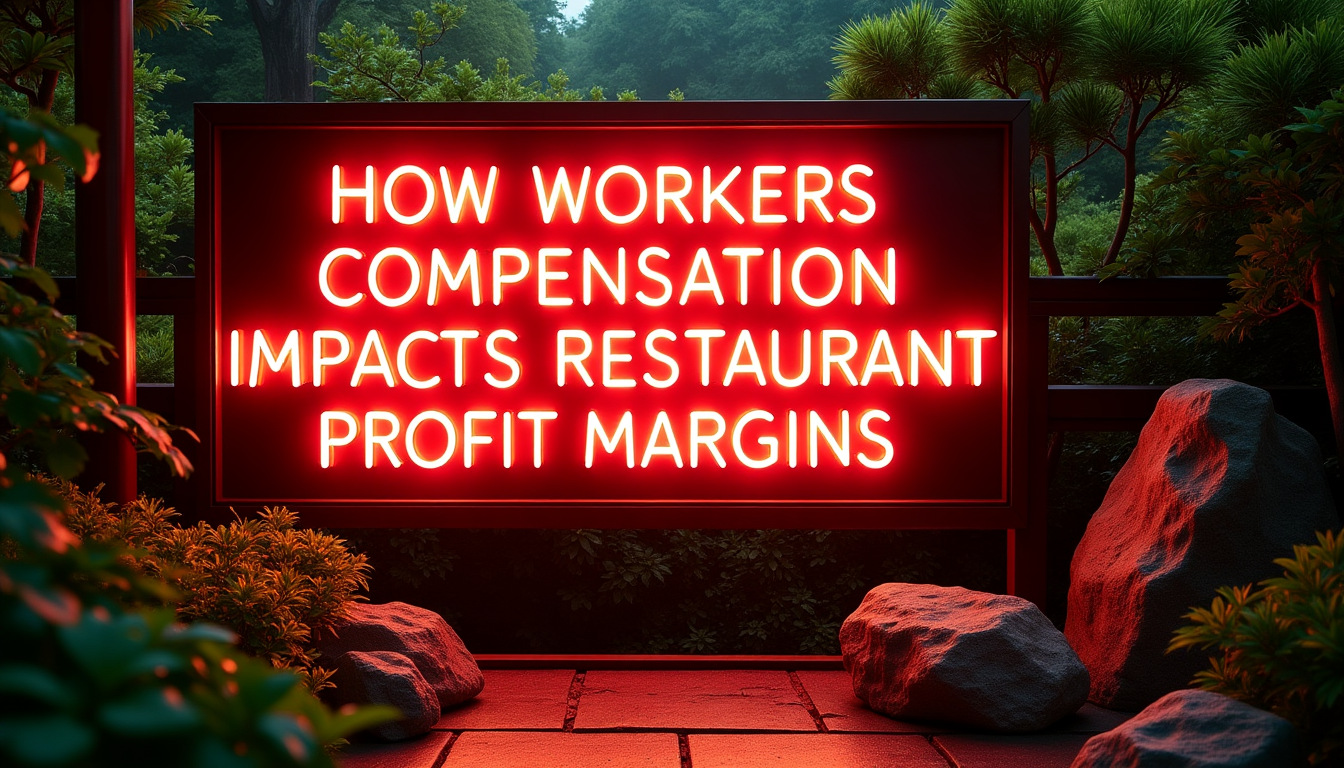

February 3, 2025

Running a restaurant is a balancing act. You want to serve great food and deliver excellent service while keeping your costs in check. One significant expense that often eats into your profits is workers compensation. In this post, we explore how workers compensation affects restaurant profit margins and share practical strategies to manage these costs. Whether you’re facing high premiums or frequent injury claims, understanding these factors can help you protect your bottom line and run a smoother operation.
For a deeper dive into the specifics of workers compensation in your industry, check out our guide on Workers Compensation for Restaurants.
Workers compensation insurance is designed to cover medical expenses and lost wages when an employee is injured on the job. In a busy restaurant environment, accidents are common—from slips and falls to burns and cuts in the kitchen. While this coverage is essential for protecting your staff, it can also impact your financial health if not managed carefully.
For those looking to get a broader perspective on the insurance a restaurant needs today, we recommend reading Learn What Insurance a Restaurant Needs in 2024. This resource provides a comprehensive look at how insurance can support your business growth.
Workers compensation costs affect your profit margins in two main ways:
Direct Costs:
Indirect Costs:
Each claim, especially those linked to common injuries in the industry, can add up. For more insights into what types of injuries typically drive these costs, see Common Injuries Covered by Workers Comp.
Several elements can drive up workers compensation costs in restaurants:
Understanding these factors is the first step toward managing and reducing your workers compensation expenses.
To safeguard your profit margins while managing workers compensation costs, consider these actionable strategies:
Improve Workplace Safety:
Invest in Employee Training:
Enhance Risk Management:
Review Your Insurance Policies:
For more details on how workers compensation insurance can protect your business, visit Workers Compensation Insurance.
Consider a local restaurant that was struggling with rising workers compensation costs. With frequent injury claims and soaring premiums, their profit margins were squeezed tight. The management decided to take action: they implemented a structured safety training program, upgraded safety equipment, and streamlined their incident reporting process. Not only did they see a reduction in injury claims, but their insurance premiums also dropped significantly. In addition, learning how to handle unique scenarios—like a dine and dash incident, which can indirectly lead to higher costs—became part of their strategy. If you’re curious about how specific incidents are managed, you can read more in Dine and Dash: Will Restaurant Insurance Cover This?.
This case illustrates that proactive investments in safety and risk management pay off in reduced costs and improved operational efficiency.
If you’re a restaurant owner looking to bolster your profit margins while managing workers compensation costs, here are some actionable steps to consider:
By following these steps, you can manage costs more effectively and create a safer work environment that ultimately protects your profit margins.
1. What is workers compensation insurance and why is it important for restaurants?
Workers compensation insurance covers medical expenses and lost wages for employees injured on the job. It’s crucial for restaurants to safeguard both their staff and finances.
2. How do workers compensation costs affect my restaurant’s profit margins?
Costs include direct expenses like premiums and claim payouts, and indirect costs such as lost productivity and training replacements—all of which can reduce profits.
3. What steps can restaurant owners take to lower workers compensation costs?
Improving safety, investing in regular training, enhancing risk management, and reviewing your insurance policy can all help lower costs.
4. How can improved safety practices benefit my restaurant financially?
Better safety reduces injury frequency, leading to fewer claims and lower premiums, which in turn protects and improves your profit margins.
5. How often should I review my workers compensation policy?
It’s recommended to review your policy at least once a year or after any significant changes in your business or claim history.
Workers compensation is a necessary expense for restaurants, but it doesn’t have to drain your profits. By understanding the direct and indirect costs and adopting proactive safety and risk management measures, you can reduce these expenses and protect your bottom line. Every dollar saved on insurance is a dollar you can reinvest in your restaurant—be it upgrading equipment, improving service quality, or expanding your menu.
For additional insights on managing your restaurant’s risks and insurance needs, revisit our resources and guides, and remember that proactive management today can lead to a healthier bottom line tomorrow.
If you need personalized advice or further assistance in managing your workers compensation costs, call us at (818) 781-6630 to speak with an agent or chat with AI Agent Sky, available 24/7 at the bottom right.
Get a workers’ comp quote HERE in minutes!
Connect with Panorama Insurance on social media to stay informed and engaged with the latest updates and resources for your business:
Protect what matters most.
Home, Auto, Business & More.
Company
Contact
Panorama Insurance Agency 19302 Citronia Street Northridge, California 91324
